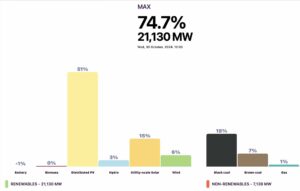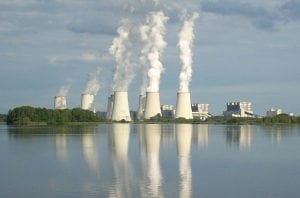The total capacity of proposed generation and storage projects has reached 150GW for the first time, as the Australian Energy Market Operator prepares to release the final version of its latest 20-year blueprint for the future grid.
AEMO, which is due to unveil the 2022 Integrated System Plan on Thursday, noted in a Tweet on Tuesday that the proposed capacity of new projects, mostly wind and solar and storage, now totalled 150.7GW, or 150,732MW, this month.
Not all of this capacity will be built, but much of it will, with the combined total of actual generation and storage installed in the grid likely to nearly triple from 59GW now to 150GW by 2032, by which time the grid will be dominated by renewables and storage.
“AEMO’s Generation Information file, updated in June, shows the fuel mix for existing generation and storage capacity in the NEM, totalling 59 GW,” it said.
“Projects in the pipeline are expected to increase this number to 150GW by 2032, with renewables leading the way.”
The overwhelming majority of new projects are wind (68GW), boosted by a raft of new offshore wind projects, followed by solar (36GW) and battery storage (27GW). There are only 7.2GW of new fossil fuel projects.
The ISP is expected to be compulsory reading for those in the energy industry, and with an interest in a successful and least cost green energy transition, particularly as Australia now has a federal government that will take it seriously.
Previous iterations of the ISP were dismissed by former federal energy minister Angus Taylor, who described its transmission line proposals – a key part of the document – as “lines to nowhere”, although his government did provide some initial funding for key projects such as the new interconnector now being built between South Australia and NSW.
In the draft ISP, AEMO presented a new scenario, known as “step change”, which reflected the dramatic changes in costs and technologies available to the grid.
This scenario, endorsed by the overwhelming majority of energy stakeholders, predicted an 80 per cent share of renewable within a decade (up from 31 per cent now), and the end of brown coal generation by 2032, and all coal generation in the early 2040s.
Some, however, predict that the next ISP, or the one following, will shift to another scenario “hydrogen superpower”, which will paint a picture of an even more rapid shift to renewables.
This is important, because a zero carbon grid will hasten emission reductions in other key sectors, particularly transport, heating and industry, and green hydrogen and green ammonia will also help change emissions intensive industrial processes, including some now dependent on gas.
One of the keys interests for readers of the latest ISP will be factoring in new developments such as the Victoria push for offshore wind, the delay of Snowy 2.0, the soaring cost of coal and gas generation, and potentially the rising cost of raw materials needed to make new equipment.










